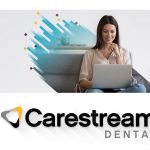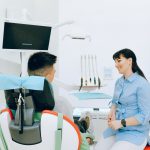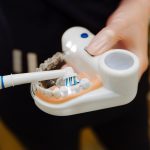At any age, caries will compromise dental and general health, due to its proven association with systemic diseases and conditions.[i],[ii],[iii] The modern approach to caries management is preventive, with practitioners supporting patients to adopt the behaviours that will help them avoid caries in the first place. Although prevention has long been talked about among the profession, what has changed, especially over the last decade, is patients’ understanding of its importance and what they must do at home if they want to visit the dentist less.
But what about older individuals who, alongside a lifetime of biting and chewing, will have received little in the way of preventive education in their younger years? The last Adult Dental Health Survey (ADHS) is still a useful resource, although an updated version is due soon. In 2011, when it was published, it talked of an older generation with a “better outlook” than their predecessors, although “the legacy of higher disease levels earlier in the life course and different patterns of dental care remain visible”.[iv]
Changing patterns of care
When we think about how “patterns of dental care” have changed, “drill and fill” used to be the common treatment for caries. Older patients will testify to this and statistically they present with more restorations and failed restorations.[v]
Caries in combination with the “physiological, psychological and functional” impact of aging are a significant problem.[vi] Elderly people are more prone to caries, because limited dexterity can make toothbrushing harder. Also, they may not be attending routine preventive appointments, because of decreased mobility, worries about needing treatment and confusion over costs.[vii] Other age-related risk factors for caries include dehydration, xerostomia caused by things like medication and cancer treatment, and a lower standard of nutrition.
Even if an older patient is receptive to learning new preventive behaviours, this may be too late to halt established oral disease. If caries treatment is required, the modern thinking is that a conservative, minimally invasive approach should be taken.
Minimally invasive dentistry encompasses the whole process, from “cavity preparation design, techniques to material selection” and it has a wealth of benefits for all patients.[viii] It’s about prioritising the preservation of the natural tooth and is not a new idea – the science has had to catch up. For example, this quote is from 1951: “loss of even a part of a human tooth should be regarded as a serious injury, never to be considered lightly”.[ix] Nearly 70 years on, dentists now have the cutting-edge techniques and innovative materials to deliver minimally invasive dental treatment as a matter of routine. Research has led to a deeper understanding about the caries process and practice has developed to match the learning.
A growing elderly population
Dentists will be treating more older patients as our elderly population continues to grow.[x] Every member of the dental team will need to know how to treat these vulnerable people with dignity and respect, but ensure they get the best dental care too. Conservative and ethical caries management and treatment, which does not damage the surrounding dental tissue, will be a comfortable, efficient experience and means less time in the chair for those who are elderly and infirm. Implant therapy is one area of dentistry that has advanced in leaps and bounds, but for a patient of any age, being able to keep their own tooth is always the preferred option.
For an elderly person who has found it difficult to eat or speak due to pain caused by dental decay, treatment that quickly restores them to good oral health can also restore them to better physical and psychological health. They will be able to eat better, communicate better. Toothache and/or oral pain can be debilitating and isolating for anyone; for an already vulnerable, older patient, the impact could be significant.
Minimally invasive dentistry is stable, functional and cost-effective. The latest materials mean that restorative treatment can be wrapped up in one appointment, with the restoration adjusted in the chair if necessary. Suitable for restoring carious defects, COLTENE’s BRILLIANT COMPONEER™ is a veneering system comprised of prefabricated shells, for aesthetic anterior restorations in a single visit, no laboratory required. This is great for dentists, who can offer a high-quality result despite minimal time in the chair and for patients, who will appreciate a great result that has preserved the dentition and supporting tissue. Older patients will benefit from knowing that the dentist prioritised conservative treatment, instead of simply selecting the easiest option.
Patterns of dental care have evolved, with modern practitioners wanting to avoid any unnecessary damage to healthy tooth structures. A minimally invasive approach benefits all patients, especially elderly patients. Dentists should use the techniques and select the right materials to allow them to deliver this kind of ethical, efficient treatment for caries and still see brilliant, stable results every time.
To find out more visit www.coltene.com, email info.uk@coltene.com or call 01444 235486
Author: Mark Allen, General Manager at COLTENE
[i] Glodny B, Nasseri P, Crismani A, Schoenherr E, Luger AK, Bertl K, Petersen J. The occurrence of dental caries is associated with atherosclerosis. Clinics. 2013 Jul; 68 (7): 946-53.
[ii] Latti BR, Kalburge JV, Birajdar SB, Latti RG. Evaluation of relationship between dental caries, diabetes mellitus and oral microbiota in diabetics. Journal of Oral and Maxillofacial Pathology: JOMFP. 2018 May;22(2) :282.
[iii] Kane SF. The effects of oral health on systemic health. Gen Dent. 2017 Nov;65 (6):30-4.
[iv] The Health and Social Care Information Centre. Executive Summary: Adult Dental Health Survey 2009, 24 March 2011. Found at: http://www.hscic.gov.uk/catalogue/PUB01086/adul-dent-heal-surv-summ-them-exec-2009-rep2.pdf (accessed January 2020).
[v] Adult Dental Health Survey 2009.
[vi] Chen X, Naorungroj S, Douglas CE, Beck JD. Self-reported oral health and oral health behaviors in older adults in the last year of life. Journals of Gerontology Series A: Biomedical Sciences and Medical Sciences. 2013 Oct 1; 68(10): 1310-5.
[vii] Chen X, Clark JJ, Preisser JS, Naorungroj S, Shuman SK. Dental caries in older adults in the last year of life. Journal of the American Geriatrics Society. 2013 Aug; 61(8): 1345-50.
[viii] Murdoch-Kinch CA, McLEAN ME. Minimally invasive dentistry. The Journal of the American Dental Association. 2003 Jan 1;134 (1): 87-95.
[ix] Markley MR. Restorations of silver amalgam. The Journal of the American Dental Association. 1951 Aug 1; 43(2): 133-46.
[x] Overview of the UK population: August 2019. Office for National Statistics, 23 August 2019. Link: https://www.ons.gov.uk/peoplepopulationandcommunity/populationandmigration/populationestimates/articles/overviewoftheukpopulation/august2019 (accessed January 2020).













